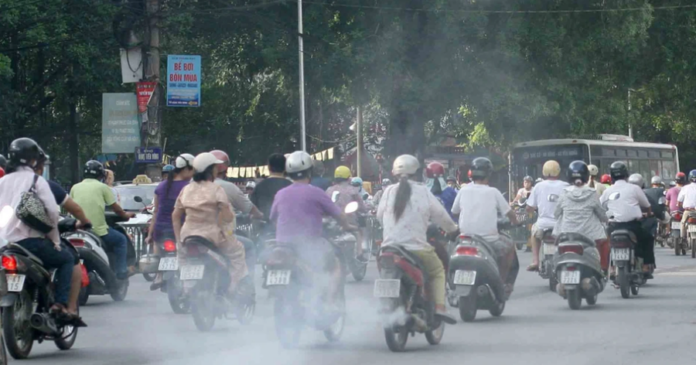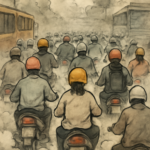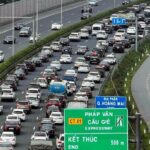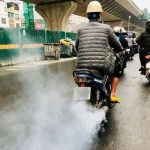At the consultation meeting on the draft Vietnam Emission Standard for automobile, motorcycle, and scooter emissions and the implementation roadmap held on June 3rd, the Ministry of Agriculture and Environment announced that according to the latest draft, the starting time for motorcycle emission inspections in Hanoi and Ho Chi Minh City will be postponed to July 1, 2027, six months later than previously proposed. Other major cities such as Haiphong, Danang, Can Tho, and Hue will follow suit from July 1, 2028.
For the remaining provinces and cities, the emission control regulation will come into effect on July 1, 2030, although local authorities are allowed to proactively adjust this date to an earlier time, depending on their actual conditions.
The draft also clearly defines the emission levels applicable according to the year of vehicle production. Specifically, for motorcycles produced before 2008, Level 1 will be applied; motorcycles produced from 2008 to 2016 will be subject to Level 2.
Motorcycles produced from 2017 to June 30, 2026, will fall under Level 3, while those produced after July 1, 2026, will have to comply with Level 4.
As for scooters, those produced before 2016 will be subject to Level 1; from 2017 to June 30, 2027, Level 2 will apply, and from July 1, 2027, onward, Level 4 will be mandatory.
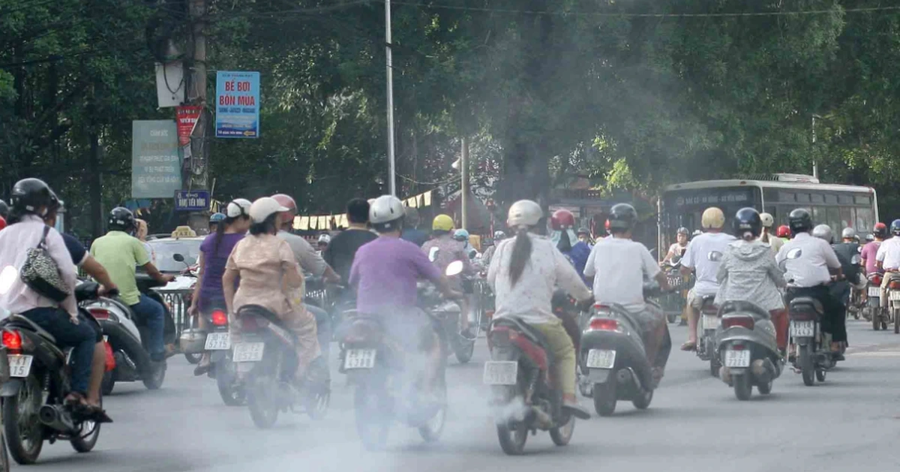
The Ministry of Agriculture and Environment explained that the postponement of the official emission inspection timeline compared to the previous draft aims to provide more time for citizens and local authorities to prepare. However, in Hanoi and Ho Chi Minh City, certain regulations will be tightened. Notably, from January 1, 2030, all motorcycles and scooters circulating in these two cities will have to meet at least Level 2 emission standards (the previous draft proposed this requirement to take effect from 2032).
The Environmental Department of the Ministry of Agriculture and Environment stated that the draft regulation and guiding circular are expected to be issued within the next 1-2 weeks. With the issuance of these documents, Vietnam will, for the first time, implement emission inspections for motorcycles.
According to the Ministry of Agriculture and Environment, air pollution in Vietnam, in general, is on the rise, particularly in major cities. The main pollutant is particulate matter, especially fine dust (PM2.5). The situation of air pollution in the country follows a temporal pattern (“season” of air pollution and specific times of the day) and is worsening in terms of both space and time in large cities like Hanoi and Ho Chi Minh City. In some inner-city areas of Hanoi, air quality has been recorded as poor to very poor, with PM2.5 levels exceeding the National Technical Regulation, which could significantly impact human health, especially for vulnerable groups.
One of the main causes of air pollution is transportation, including the operation of road motor vehicles, motorcycles, and scooters. Environmental experts’ research shows that the contribution of pollution from transportation activities ranges from 20% to 60%.
Currently, TCVN 6438:2018 is the only standard that sets out the maximum permitted emission limits for motorcycles and scooters. However, according to the Law on Standards and Technical Regulations, TCVN is only recommendatory and voluntarily applied. Only the National Technical Regulation, issued by state agencies, has legal enforceability.
Nevertheless, the Ministry of Agriculture and Environment stated that, as of now, there is no such regulation for motorcycles and scooters circulating in Vietnam, which means there is insufficient legal basis to fully implement the provisions of the Law on Environmental Protection, the Law on Road Traffic Order and Safety, and the directives of the Prime Minister regarding the early implementation of mandatory emission standards for motorcycles and scooters in the country.
Additionally, the discrepancy between emission standards for imported vehicles, newly produced vehicles, and those already in circulation creates a challenge in emission control. Currently, there is only a roadmap for applying emission standards to imported and domestically produced motor vehicles, as stipulated in Decision No. 19/2024/QD-TTg dated November 15, 2024, issued by the Prime Minister. To ensure a coherent approach to emission management and control, it is necessary to establish a similar roadmap for motorcycles and scooters circulating in Vietnam.
At present, most motorcycles and scooters in Vietnam only need to meet Levels 1 and 2 of TCVN 6438:2018, which are significantly lower than the standards applied in regional and international contexts. In reality, there is only a mechanism for eliminating self-assembled vehicles and setting age limits for cars, without a systematic approach to phasing out old and outdated motorcycles and scooters with high emissions, resulting in the continued circulation of these polluting vehicles.
According to the Ministry of Agriculture and Environment, the development of a roadmap for the National Technical Regulation on emissions from motorcycles and scooters aims to control and reduce air pollution caused by emissions, thereby protecting public health and improving the quality of life.
Used Cars Entering the City Center: Clearing the Emissions Hurdle
The Ministry of Natural Resources and Environment has proposed a draft decree on vehicle emissions, suggesting that Hanoi and Ho Chi Minh City adopt higher standards than the rest of the country. From 2026, these two cities will implement emission standards equivalent to those for vehicles produced in 2017 and beyond. This has sparked concerns among owners of older vehicles (produced before 2017) who worry about potential restrictions on entering the downtown areas of these two cities.
The Greatest Minds to Gather in Vietnam for VinFuture 2024
The VinFuture Science & Technology Week and Award Ceremony 2024 will take place in Hanoi from December 4th to 7th, 2024.

